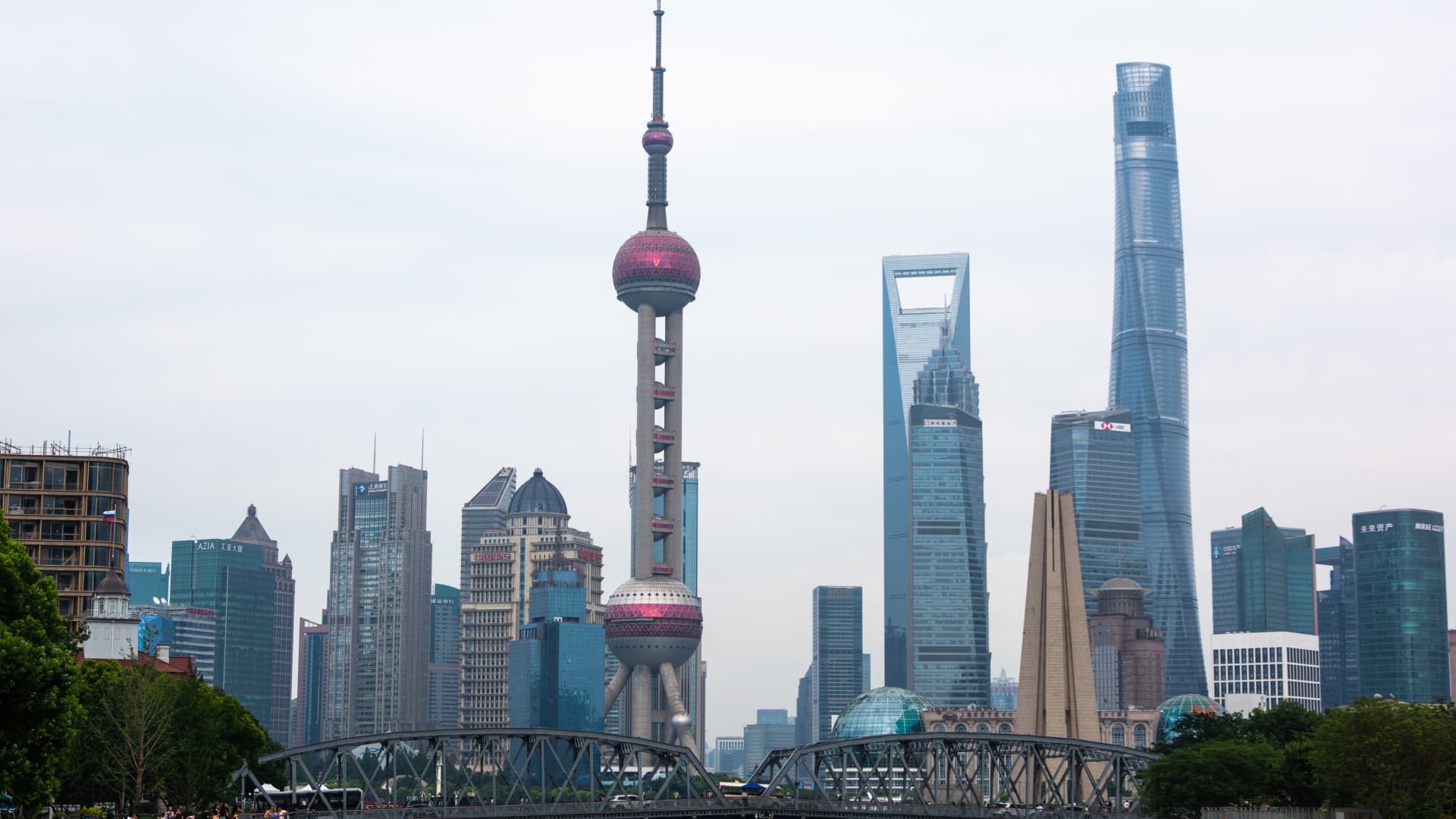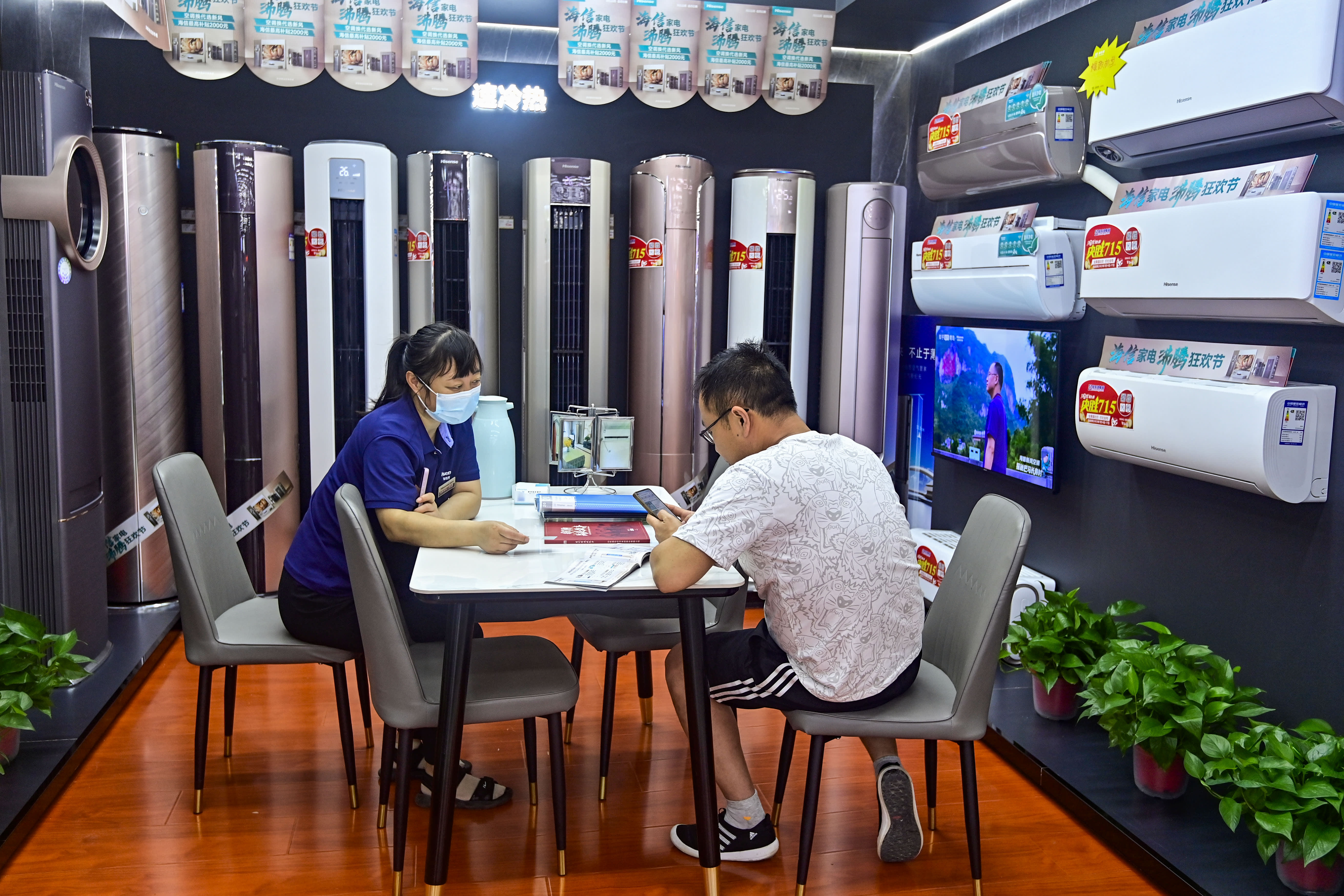The Chinese economy could be facing a prolonged period of lower growth, a prospect which may have global ramifications after 45 years of rapid expansion and globalization.
The Chinese government is ramping up a host of measures aimed at boosting the economy, with leaders on Monday pledging to “adjust and optimize policies in a timely manner” for its beleaguered property sector, while pushing stable employment towards a strategic goal. The Politburo also announced pledges to boost domestic consumption demand and resolve local debt risks.
related investing news
Chinese gross domestic product grew by 6.3% year-on-year in the second quarter, Beijing announced Monday, below market expectations for a 7.3% expansion after the world’s second-largest economy emerged from strict Covid-19 lockdown measures.
On a quarterly basis, economic output grew by 0.8%, slower than the 2.2% quarterly increase recorded in the first three months of the year. Meanwhile, youth unemployment hit a record high 21.3% in June. On a slightly more positive note, the pace of industrial production growth accelerated from 3.5% year-on-year in May to 4.4% in June, comfortably surpassing expectations.
The ruling Chinese Communist Party has set a growth target of 5% for 2023, lower than usual and notably modest for a country that has averaged 9% annual GDP growth since opening up its economy in 1978.
Over the past few weeks, authorities announced a series of pledges targeted at specific sectors or designed to reassure private and foreign investors of a more favorable investment environment on the horizon.
However, these were largely broad measures lacking some major details, and the latest readout of the Politburo’s quarterly meeting on economic affairs struck a dovish tone but fell short of major new announcements.
Julian Evans-Pritchard, head of China economics at Capital Economics, said in a note Monday that the country’s leadership is “clearly concerned,” with the readout calling the economic trajectory “tortuous” and highlighting the “numerous challenges facing the economy.”
These include domestic demand, financial difficulties in key sectors such as property, and a bleak external environment. Evans-Pritchard noted that the latest readout mentions “risks” seven times, versus three times in the April readout, and that the leadership’s priority appears to be to expand domestic demand.
“All told, the Politburo meeting struck a dovish tone and made it clear the leadership feels more work needs to be done to get the recovery on track. This suggests that some further policy support will be rolled out over the coming months,” Evans-Pritchard said.
“But the absence of any major announcements or policy specifics does suggest a lack of urgency or that policymakers are struggling to come up with suitable measures to shore up growth. Either way, it’s not particularly reassuring for the near-term outlook.”
Triple shock
The Chinese economy is still suffering from the “triple shock” of Covid-19 and prolonged lockdown measures, its ailing property sector and a swathe of regulatory shifts associated with President Xi Jinping’s “common prosperity” vision, according to Rory Green, head of China and Asia research at TS Lombard.
As China is still within a year of reopening after the zero-Covid measures, much of the current weakness can still be attributed to that cycle, Green suggested, but he added that these could become entrenched without the appropriate policy response.
“There is a chance that if Beijing doesn’t step in, the cyclical part of the Covid cycle damage could align with some of the structural headwinds that China has — particularly around the size of the property sector, decoupling from global economy, demographics — and push China on to a much, much slower growth rate,” he told CNBC on Friday.
TS Lombard’s base case is for a stabilization of the Chinese economy late in 2023, but that the economy is entering a longer-term structural slowdown, albeit not yet a Japan-style “stagflation” scenario, and is likely to average closer to 4% annual GDP growth due to these structural headwinds.
Although the need for exposure to China will still be essential for international companies as it remains the largest consumer market in the world, Green said the slowdown could make it “slightly less enticing” and accelerate “decoupling” with the West in terms of investment flows and manufacturing.
For the global economy, however, the most immediate spillover of a Chinese slowdown will likely come in commodities and the industrial cycle, as China reconfigures its economy to reduce its reliance on a property sector that has been “absorbing and driving commodity prices.”
“Those days are gone. China is still going to invest a lot, but it’s going to be sort of more advanced manufacturing, tech hardware, like electric vehicles, solar panels, robotics, semiconductors, these types of areas,” Green said.
“The property driver — and with that, that pool of iron ore from Brazil and/or Australia and machines from Germany or appliances from all over the world — has gone, and China will be a much less important factor in the global industrial cycle.”
Second order impacts
The recalibration of the economy away from property and toward more advanced manufacturing is evident in China’s massive push into electric vehicles, which led to the country overtaking Japan earlier this year as the world’s largest auto exporter.
“This shift from a complementary economy, where Beijing and Berlin kind of benefit from each other, to now being competitors is another big consequence of the structural slowdown,” Green said.
He noted that beyond the immediate loss of demand for commodities, China’s reaction to its shifting economic sands will also have “second order impacts” for the global economy.
“China is still making a lot of stuff, and they can’t consume it all at home. A lot of the stuff they’re making now is much higher quality and that will continue, especially as there’s less money going into real estate, and trillions of renminbi going into these advanced tech sectors,” Green said.
“And so the second order impact, it’s not just less demand for iron ore, it’s also much higher global competition across an array of advanced manufactured goods.”
Though it is not yet clear how Chinese households, the private sector and state-owned enterprises will look after the transition from a property and investment-driven model to one powered by advanced manufacturing, Green said the country is currently at a “pivotal point.”
“The political economy is changing, partly by design, but also partly by the fact that the property sector is effectively dead or if not dying, so they have to change and there’s emerging a new development model,” he said.
“It won’t just be a slower version of the China we had before Covid. It’s going to be a new version of the Chinese economy, which will also be slower, but it’s going to be one with new drivers and new kinds of idiosyncrasies.”


